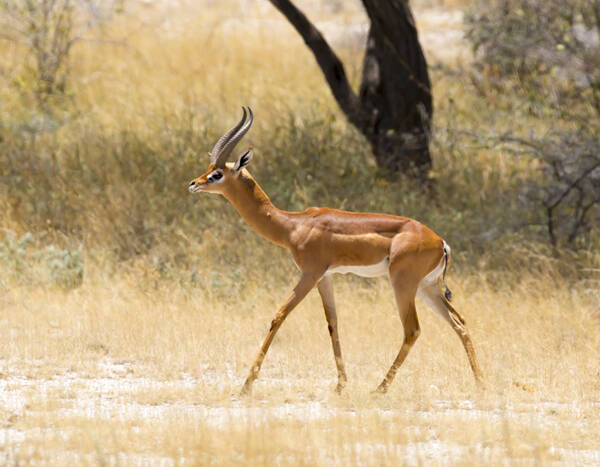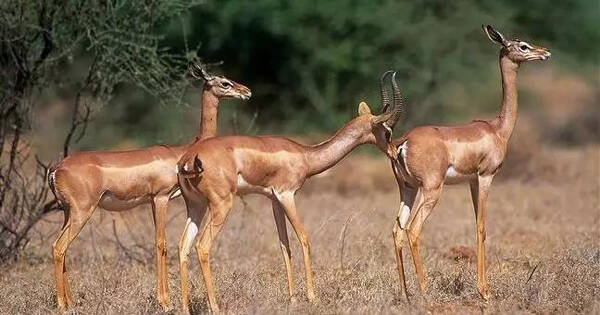Litocranius walleri
IUCN
LCBasic Information
Scientific classification
- name:Litocranius walleri
- Scientific Name:Litocranius walleri,Kirin Antelope
- Outline:Ungulata
- Family:Artiodactyla Bovidae Geiranger
Vital signs
- length:About 150 cm
- Weight:40-50kg
- lifetime:About 12 years
Feature
mammal whose name originated from the somali language
Distribution and Habitat
The antelope is distributed in dry areas of East Africa, such as Somalia, Ethiopia, Tanzania, and Kenya.
The antelope lives in dry thorny jungle areas and even desert areas.
Appearance
The giraffe has a body length of 1.5 meters, a tail length of 0.25 meters, a shoulder height of 0.9-1 meters, and a weight of 40-50 kilograms. Males have horns, while females have no horns. The horns are about 40 cm long. Its most distinctive feature is its giraffe-like long neck and slender legs.
The male has a thick, harp-shaped horn up to 40 centimeters long. Their skin is red on the back, lighter on the sides, and white on the belly.
The name giraffe originates from the Somali word for a mammal that can stand on one hind leg. Only the male has short, thick, harp-shaped horns up to 17 centimeters long. Their skin is red on the back, lighter on the sides, and white on the belly. Giraffes are found only in Somalia and Kenya in Africa. The giraffe is famous for its slender and graceful body.
Details
Giraffe (scientific name: Litocranius walleri), also known as Kirin antelope. Its name originates from the Somali word for mammal.

Giraffes usually live alone or in pairs, and occasionally 6 or 7 females live together in small groups led by a male. Unlike other antelopes, giraffes do not eat low-lying plants. Their foraging habits are very similar to those of giraffes, which use their long upper lips and tongues to pull leaves to eat. They often stand upright on their hind legs and support the trunk with their front legs. They extend their necks in a straight line with their bodies to reach the highest, fresh and juicy leaves. Giraffes rarely drink water and rely mostly on food to get the water they need. Giraffes are active throughout the day and rest only at night. Due to its slender limbs, it can jump very quickly and its movements are very graceful.
The natural enemies of the giraffe include leopards, cheetahs, lions, hyenas, wild dogs and other predators. When a predator approaches, the giraffe does not immediately run away like most antelopes, but tries to hide itself as much as possible without being discovered. The brown-red fur is a good camouflage. When they are motionless, they can blend into the background. Depending on the distance of the beast, they will bend their bodies as much as possible to hide in the trees. Once the beast gets too close, they will They will burst out of the trees, leaping and escaping at full speed.

There are images of giraffes in paintings in ancient Egyptian tombs dating from 5600 BC. The Somalis have always refused to eat the meat of giraffes. They believe that giraffes are relatives of camels. If they kill giraffes, they will suffer from diseases. It will spread and take away their camels. However, after the Europeans came here, the giraffes began to be hunted and almost became extinct. Fortunately, the giraffes were protected in time, and their numbers have increased slightly in the past 50 years.
It is listed in the 2015 Red List of Endangered Species of the World Conservation Union (IUCN) ver 3.1 - Near Threatened (NT).
Protect wild animals and eliminate wild game.
Maintaining ecological balance is everyone’s responsibility!








